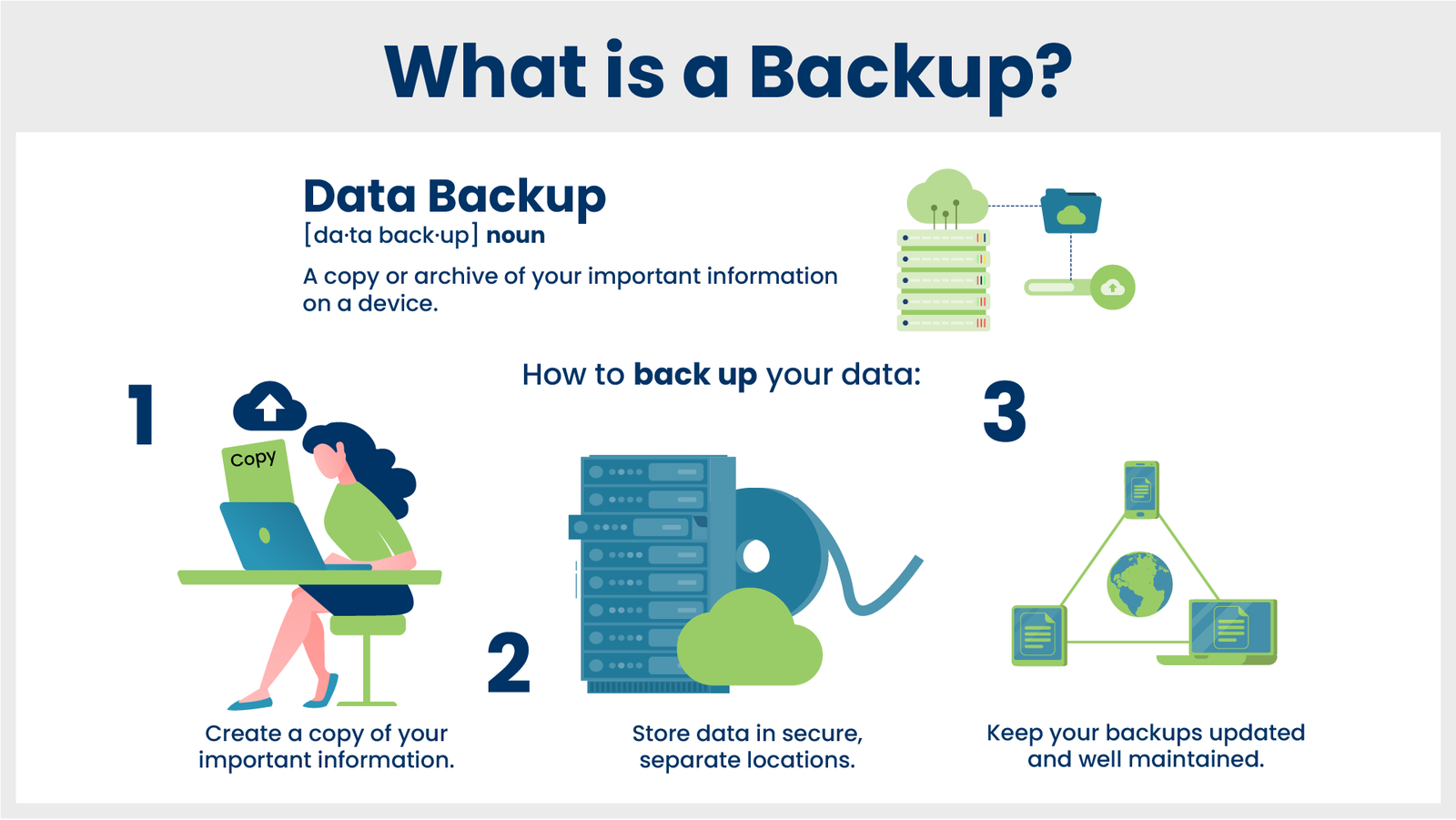How to Back Up Your Data Properly A Step-by-Step Guide
How to Back Up Your Data Properly A Step-by-Step Guide
Data loss can be devastating for individuals and businesses alike. Imagine losing years of work, precious memories, or critical financial records—the consequences can be severe. Data backup is a crucial process for safeguarding valuable information and ensuring business continuity. This comprehensive guide will walk you through the essential steps of creating a robust data backup strategy, from choosing the right methods to testing your backups regularly, ultimately offering you peace of mind knowing your valuable data is protected. We will cover a range of options from basic strategies to more advanced techniques, including the benefits of offsite backups and the use of cloud-based solutions. We’ll examine the essential components of a well-defined backup schedule, exploring factors like frequency and capacity, while discussing essential strategies to maximize the effectiveness of your backup plan. By the end of this guide, you’ll have a clear understanding of how to build a foolproof data backup process tailored to your individual needs.
1. Understanding the Importance of Data Backups
1.1. Defining Data Backup
Data backup involves creating copies of your important files and data to protect them from accidental deletion, hardware failure, or cyberattacks. Regular data backups are critical for ensuring business continuity, allowing for swift recovery in case of a disaster. In the modern digital world, data has become an irreplaceable asset, and a robust backup strategy is no longer an option, but a necessity for individuals and organizations alike. This step delves into the fundamentals of what data backup entails. It emphasizes the critical role of regular backups in mitigating potential threats and restoring access to critical data. Data loss is often costly and time-consuming to recover from, so proper planning is paramount.
1.2. Identifying Potential Data Loss Risks
Data loss can stem from various factors, including accidental deletion, malware attacks, hardware malfunctions, and even natural disasters. A potential risk to data security is the increasing sophistication of cyberattacks, necessitating robust security measures. It is essential to understand these potential threats, so you can better appreciate why regular backups are critical for preventing such incidents from inflicting severe harm.
2. Choosing the Right Backup Methods
2.1. Local Backups
Local backups involve storing copies of your data on a local hard drive or external storage device. This simple method is often sufficient for smaller datasets and personal use, but it comes with potential limitations. For example, a physical disaster could affect the local hard drive or external device, rendering the backup unusable. It is crucial to understand the practicality and limitations of local backups to determine whether they fit your specific needs. A local backup approach can also be susceptible to loss if the local system encounters unforeseen damage.
Related Post : A Beginner’s Guide to Learning Python Programming
2.2. Cloud Backups
Cloud backups offer a secure offsite storage solution for your data. They leverage the remote servers to host your backup copies. These backups are accessible remotely, making recovery from virtually anywhere easier than traditional methods. Cloud backups are often the most suitable option for safeguarding data from local device failures. Many cloud-based backup solutions offer automatic backups, convenient remote access, and enhanced data protection. Consider the scalability and redundancy offered by cloud backups to ensure that your data remains safe from loss, theft, or damage.
3. Establishing a Robust Backup Schedule
3.1. Frequency of Backups
The frequency of your backups should align with the criticality of your data and potential risk factors. For frequently updated files, daily or even more frequent backups might be essential. This is especially true for businesses with real-time data updates or individuals with critical documents. Establishing a regular and consistent backup schedule is key to maintaining the integrity of your data.
3.2. Backup Capacity Planning
Understanding the volume of your data is crucial for estimating storage requirements. Proper capacity planning will save you from storage issues and ensure that your backups are consistently successful. Estimating data volume and backup frequency can help prevent unexpected issues and ensure seamless data retention. Be sure to account for future data growth when assessing your backup capacity.
4. Testing Your Backups
4.1. Regular Testing
Regularly testing your backups is paramount to ensure their integrity and ability to be restored. If your backup plan is not tested regularly, there is a significant risk of data being unrecoverable in a disaster. The time and effort required to verify your backup plan are invaluable investments compared to the potential costs and recovery time for data loss.
4.2. Recovery Exercises
Regularly practicing recovery procedures is also critical. In practice, testing your data backup plan for recovery exercises can greatly improve resilience and recovery speed in case of data loss or damage. These exercises are valuable for gaining practical experience in restoring data and verifying its integrity after the recovery process.
5. Maintaining Your Data Backup Strategy
5.1. Data Storage Security
Secure your storage devices, and ensure your backups are encrypted to prevent unauthorized access. Data security and privacy are critical. Proper encryption and access controls can prevent breaches and ensure the confidentiality of your stored data.
5.2. Security Best Practices
Protecting your backup system and data is paramount. Understanding and following cybersecurity best practices can mitigate risks associated with data breaches, unauthorized access, or malware attacks. Maintaining the security of your backup system and adhering to strict backup protocols will minimize any potential threats that may arise.
In conclusion, backing up your data properly is crucial for protecting your valuable information from loss or damage. By following the step-by-step guide provided in this article, you can implement a robust data backup strategy that aligns with your specific needs. Remember, regular backups are not just a good idea; they are an essential practice for maintaining data safety and security. Don’t delay—start backing up your data today! Schedule regular backups, choose the right backup methods, and test your backups regularly to ensure everything is working as expected. Contact a professional IT support service or refer to additional online resources if you encounter specific issues or have complex data backup needs.
Share this content:














Post Comment